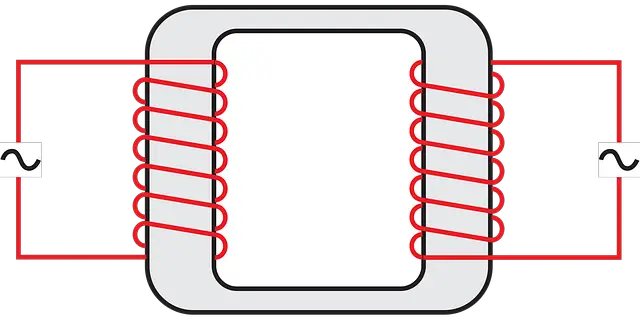Low voltage transformers play a crucial role in electrical systems, stepping down voltage levels to ensure the safe and efficient operation of various devices.
However, when these transformers begin to emit a loud buzzing noise, it can be indicative of underlying issues that warrant attention.
A buzzing transformer itself is not necessarily dangerous, but the underlying issues that may be causing the buzzing could pose safety risks.
The buzzing sound is an indication that there may be mechanical or electrical problems within the transformer. Depending on the severity of these issues, there are several potential risks:
This article aims to explore the reasons behind a low voltage transformer buzzing loudly and provide insights into potential solutions.
Causes of Loud Buzzing in Low Voltage Transformers:
- Loose Laminations:
- Transformers consist of laminated iron cores to reduce energy losses. Over time, these laminations can become loose due to factors like vibration or mechanical stress, leading to a buzzing sound.
- Electromagnetic Forces:
- The core of a transformer is subjected to electromagnetic forces during operation. If these forces become imbalanced or excessive, they can cause vibrations in the core, resulting in a buzzing noise.
- Resonance:
- Resonance occurs when the natural frequency of the transformer coincides with an external force. This can amplify vibrations and contribute to the loud buzzing noise.
- Faulty Windings:
- Transformer windings are essential components for voltage conversion. When windings are damaged or have insulation issues, it can create uneven magnetic fields, leading to buzzing.
- Overloading:
- Excessive loads beyond the transformer’s capacity can cause overheating and increased magnetic flux, contributing to buzzing. Overloading may result from improper sizing or a sudden surge in power demand.
- Aging and Wear:
- Transformers undergo wear and tear over time. Aging components, such as bushings and insulation, can degrade, impacting the transformer’s performance and generating a buzzing noise.
- Environmental Conditions:
- Harsh environmental conditions, such as extreme temperatures or humidity, can affect the transformer’s mechanical and electrical components, contributing to buzzing.

Can Buzzing in Low Voltage Transformers damage it?
Yes, buzzing in low voltage transformers can potentially lead to damage if left unaddressed. The buzzing sound often indicates underlying issues within the transformer, and if these issues are not resolved, they may escalate and cause more severe problems. Here are some ways in which buzzing can potentially damage a low voltage transformer:
- Increased Vibrations:
- The buzzing noise is often a result of vibrations within the transformer. If these vibrations become excessive, they can lead to physical damage by causing the loosening of laminations, bolts, or other structural components.
- Heat Buildup:
- Transformer buzzing may be accompanied by increased heat generation. Excessive heat can accelerate the aging of insulation materials and contribute to the degradation of other components, potentially leading to a decline in the transformer’s performance and lifespan.
- Imbalance in Magnetic Fields:
- Transformers rely on balanced magnetic fields for efficient operation. If buzzing is indicative of imbalances, it can result in uneven stresses on the transformer windings and core, potentially leading to insulation breakdown and short circuits.
- Resonance Effects:
- Resonance, which can cause vibrations and amplify the buzzing noise, may lead to mechanical stress on the transformer’s structure. Over time, this stress can compromise the integrity of the transformer and contribute to its deterioration.
- Worsening of Existing Issues:
- The buzzing noise itself may be a symptom of an existing problem, such as loose laminations or damaged windings. If the root cause is not identified and addressed, the buzzing may persist or worsen, leading to further damage.
- Reduced Efficiency:
- Transformers experiencing issues indicated by buzzing may not operate at peak efficiency. This can result in increased energy losses, reduced voltage regulation, and diminished overall performance, potentially impacting connected electrical equipment.
It’s essential to treat buzzing in low voltage transformers as an early warning sign and take prompt action to investigate and resolve the underlying causes.
Regular maintenance, inspections, and timely repairs can help prevent further damage and ensure the reliable and safe operation of the transformer.
If in doubt or if the buzzing persists, it is advisable to consult with a qualified electrical technician or engineer to conduct a comprehensive assessment and implement necessary corrective measures.
Read also my article :Can Your 110V Toaster Survive on 220V?
Resolving the Issue:

- Tighten Loose Laminations:
- Inspect the transformer for loose laminations and tighten them if necessary. Professional assistance may be required for this task.
- Address Electromagnetic Forces:
- Ensure that the transformer is properly grounded and consider installing vibration dampening devices to minimize electromagnetic forces.
- Resonance Mitigation:
- Adjust the mounting and positioning of the transformer to minimize resonance. Adding dampening materials can help absorb vibrations.
- Inspect and Repair Faulty Windings:
- Conduct a thorough inspection of transformer windings, repairing or replacing any damaged or faulty components. This should be done by a qualified technician.
- Prevent Overloading:
- Ensure that the transformer is appropriately sized for the load it is handling. Implement protective measures such as fuses or circuit breakers to prevent overloading.
- Regular Maintenance:
- Implement a routine maintenance schedule to address aging components and replace any worn-out parts. This helps extend the lifespan of the transformer and prevents issues.
- Control Environmental Factors:
- Place the transformer in a controlled environment, or install weatherproofing measures to protect it from extreme conditions.
Conclusion:
A loud buzzing noise in a low voltage transformer is a sign that should not be ignored. Identifying and addressing the root causes is crucial for ensuring the transformer’s proper functioning and preventing potential hazards.
Regular maintenance, professional inspections, and appropriate adjustments can go a long way in resolving these issues and maintaining the reliability of low voltage transformers.
If in doubt or if the buzzing persists, it is advisable to consult with a qualified electrical technician to conduct a comprehensive assessment and implement necessary repairs.
Want to learn more about electricity? Check my YouTube channel!
Are You An Electrical Engineer or Electrician?
Install my Free On Google Play Now! It’s 100% Free
The staff I recommend (Amazon Affiliate Links to products I believe are high quality):
- Economy 120 Volt/60Hz AC Power Source – Step-Down Voltage & Frequency Converters 1800W
- UNI-T Digital Multimeter Tester UT139C
- 50-Amp Extension Cord for RV “100ft”
- Voltage Stabilizer 110/220v
- Hair Dryer “best selling“
- TOSHIBA EM131A5C-BS Countertop Microwave Ovens
Disclaimer: This contains affiliate links to Amazon products. I may earn a commission for purchases made through these links.